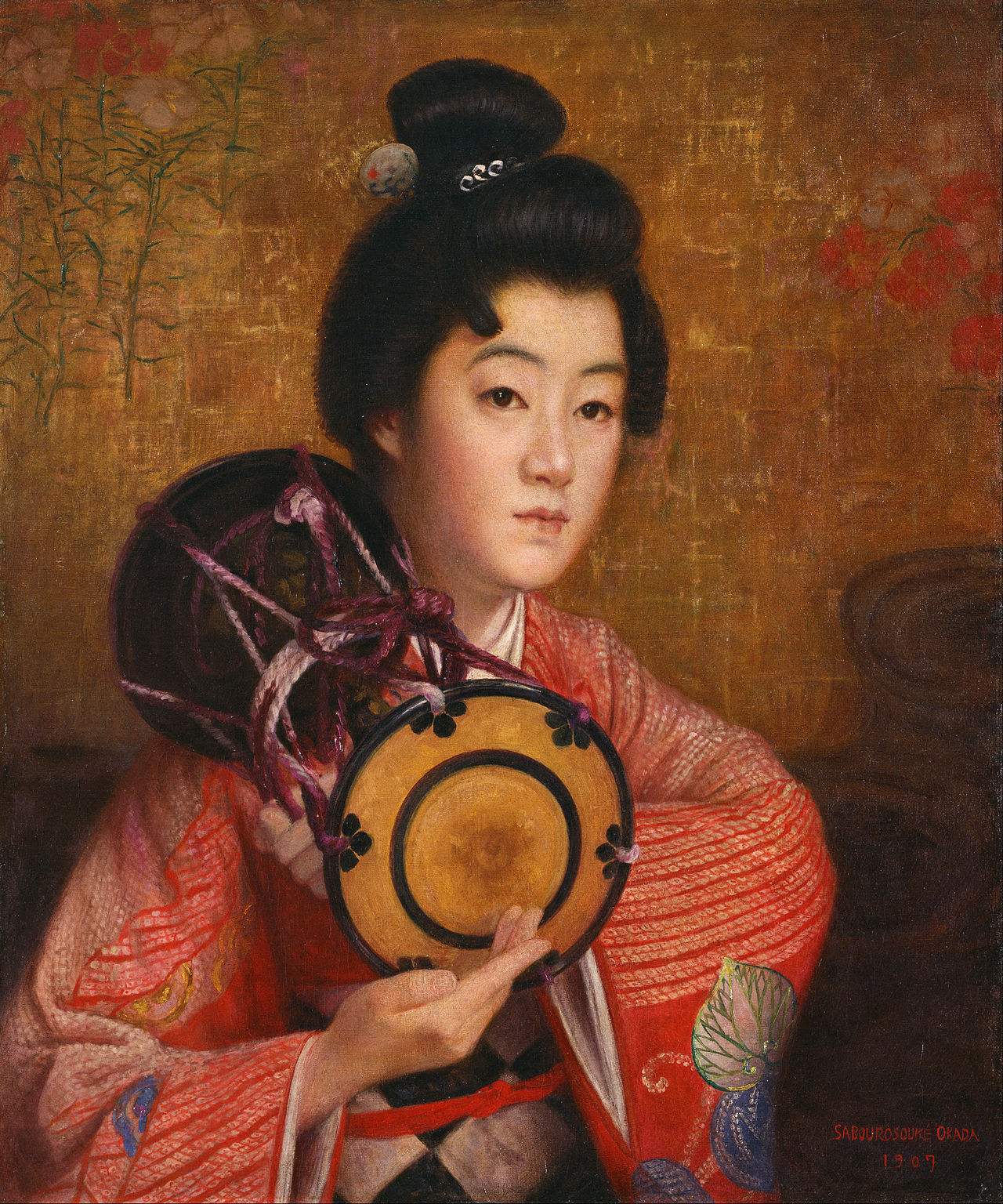=> HOME of Structured Data for Bios
岡田三郎助 Okada Saburosuke
|
Structured DataPainter, Professor
http://www.artnet.com/artists/saburosuke-okada/
Okada Saburōsuke (Japanese: 岡田 三郎助; 12 January 1869, Saga – 23 September 1939, Tokyo) was a Japanese painter in the Yōga style and a Professor at the "Tōkyō Bijutsu Gakkō" (School of Fine Arts); precursor of the Tokyo University of the Arts.
Born: 1869-01-12
Saga Prefecture, Japan
Died: 1939-09-23
Tokyo, Japan
Nationality: Japanese
Relations: Parent: Ishio Takamoto
Step-parent: Okada Shouzou
Alumni of: Soyama Yukihiko's studio
Alumni of: Taikokan studio
Alumni of: Tenshin Dojo studio
Colleague of: Fujishima Takeji
Member of: Hakubakai
Member of: Imperial Art Academy
Follows: Soyama Yukihiko
Follows: Kume Keiichiro
Follows: Horie Masaaki
Follows: Kuroda Seiki
Follows: Raphaël Collin
Taught at: Tokyo School of Fine Arts
Taught at: Hongō Painting Institute
Important Roles: Creator of: Portrait of a Lady 婦人像
Founder of: Hongō Painting Institute
Award and recognition: In 1937, Okada received the 1st Order of Cultural Merit, the highest honor in the Japanese cultural world.
Award and recognition: In 1907 he won the first prize of the Tokyo Industrial Exhibition for Image of a Woman (Purple tone).
|
Sources and references
- 顏娟英,〈勇者的畫像〉,《臺灣美術全集1‧陳澄波》,臺北市:藝術家出版社,1992,頁27-43。
- 顏娟英,〈殿堂中的美術─臺灣早期現代美術與文化啟蒙〉,《中央研究院歷史語言研究所集刊》64:2(1993),頁469-610。
- Starting Out from 23.5°N: Chen Cheng-po, Academia Sinica Digital Center (ASDC). http://chenchengpo.asdc.sinica.edu.tw/friend_en
© Marcia Lei Zeng for Academia Sinica Center for Digital Cultures
